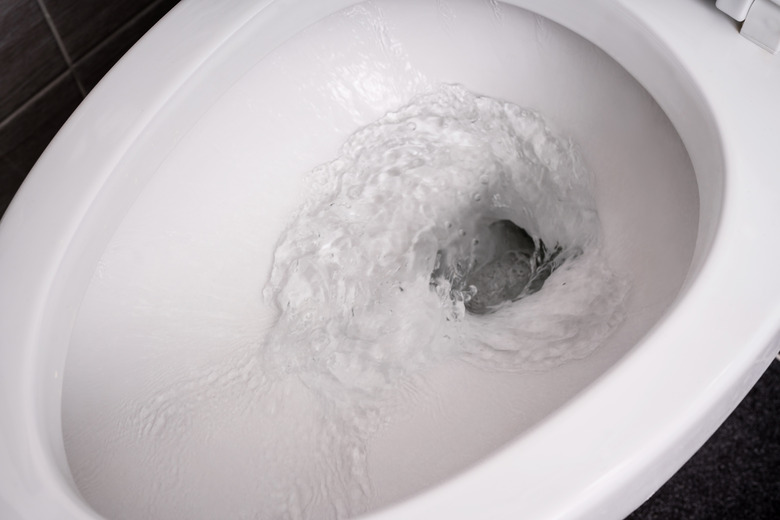How To Stop Toilet Flush Back Splash
We may receive a commission on purchases made from links.
It happens in the nicest of households. An overactive toilet can leave water marks on walls and toilet seats and leave your guests irritated as well. When water shoots out of the bowl after a flush, it is generally due to the amount of water that is running into the bowl. There are a few ways to diagnose and resolve this issue and get the toilet to flush without any unwanted liquid fanfare.
High Toilet Water Level
High Toilet Water Level
If the water level is too high in the bowl, then water may fly from the bowl and onto pants, rugs and walls. A worn flapper is typically the culprit. Fortunately, you can install a new flapper easily with a few tools. To replace a worn flapper, gather a small bucket, replacement flapper, pliers and some towels. Put on some rubber or latex gloves. Take the current flapper to a home improvement store to match its size and design to the new flapper so it fits snugly.
The water supply valve next to the wall should be turned off before working on the toilet. Remove the tank lid and drain the water or otherwise remove it to get to the flapper at the bottom of the tank. Take the flapper's chain off the tank's lever arm and pry off the worn flapper. Clean up any crud that has collected around the edges of the hole with clean cloths.
Slide the new flapper chain into the hole at the end of the flapper's arm. Connect the back of the flapper to the bottom of the tank and let it fill with water. Adjust the chain as necessary until the toilet doesn't gurgle or hiss and flushes properly. The flapper should stay raised until nearly all of the water has left the tank.
Low Toilet Water Level
Low Toilet Water Level
Low water in a toilet isn't ideal either as it can lead to the toilet not completely flushing. Clogged inlet holes can prevent the right amount of water from filling the bowl from the tank. The water jets beneath the rim of the inside of the toilet can get clogged by mineral deposits from hard water or gunk from a bowl that isn't cleaned well or often enough.
Try pouring hot vinegar into the overflow tube and allow it to sit for at least an hour and preferably overnight. Clean out the inlet holes under the lip of the toilet bowl with a thin wire before flushing to clear the debris.
Adjust the Floating Arm
Adjust the Floating Arm
The water level can be lowered or raised with an adjustment to the float arm for a diaphragm style ball cock. To lower the arm and subsequently the water level in the bowl, turn the screw on the arm counterclockwise. Turn it in the opposite direction to raise the arm.
If you have a floating-cup ball cock, pinch the spring clip and slide the float cup down the arm to lower the water level in the toilet bowl.
